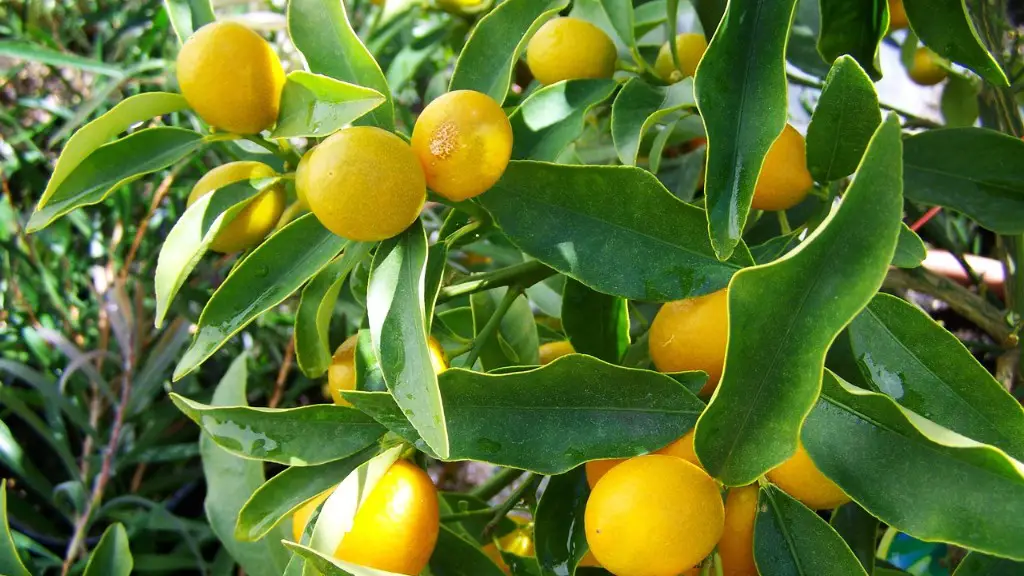Avocados are a popular fruit around the world and have become a staple of many diets in recent years. But have you ever wondered how long an avocado tree bears fruit?
Avocados are borne on the trees of an evergreen flowering shrub in the Lauraceae family, and are native to Central and South America. While many species of avocados exist, one of the most popular varieties is the Hass variety, which is the standard avocado you think of when you hear the word ‘avocado’. This variety is native to Mexico and was first popularized by Rudolph Hass in 1935.
The growing process of the Hass avocado tree is fairly slow, but when it comes to bearing fruit, the tree takes on average 5 to 13 years, though some trees start bearing fruit as early as 3 years and others take as long as 15 years to start bearing.
The amount of fruit produced by an avocado tree depends on the climate and other environmental factors, as well as the variety of the tree. Generally, trees will produce the most amount of fruit in dry climates and the least amount of fruit in humid climates.
In terms of taking care of the tree and aiding in the production of fruit, experts recommend that pruning and proper fertilization are key to keeping the tree healthy and producing fruit. Pruning should be done at least once a year and the tree should be fertilized at least once annually with a fertilizer specifically designed for avocado trees.
When it comes to picking the fruit, the avocado is usually ready to be picked when it is still green and its skin turns black as it ripens. Do not wait until it turns brown, as it will be overripe and you won’t be able to use it. Also, make sure to pick the fruit carefully and gently, as you don’t want to damage the tree or the fruit itself.
Harvesting Avocados
Harvesting avocados from a tree is a process that requires patience, technique and timing. Avocados should be harvested when they have reached their maximum size and weight, which is usually just prior to ripening. To do so, the limbs of the tree must be tested with slight pressure or a tug to make sure they don’t give way easily, which could damage the fruit. Once the correct limb is found, the avocados should be removed with gloves or a specially designed picking tool, and should be handled delicately to avoid bruising.
The tree may produce between 70 and 200 avocados per year, depending on its size and environmental conditions. To maximize the potential of a single tree, experts recommend thinning the yield and staggering the harvesting over a period of time. This means leaving some avocados on the tree for later picking when they are riper and still have some of their green color.
Avocados are a tricky fruit, and not just when it comes to picking them from the tree. Harvesting from the wrong tree can lead to a dissatisfying taste and texture, so it’s important to know the characteristics of the variety you’re picking from.
Tips for Picking Avocados
To ensure you’re picking the right variety, there are some tips to help you. Check the color of the skin of the avocado – a darker, black-green color is usually a sign of a ripe, ready-to-eat avocado. You can also determine the ripeness of an avocado by gently pressing the end opposite the stem with your thumb – it should yield to gentle pressure and feel slightly soft. You can also check the stem end of the avocado, as a developed and ready-to-eat avocado should have a smooth, dark brown-green surface.
Another way to determine whether an avocado is ripe and ready to be eaten is to look at the flesh inside. If the flesh of the avocado is light green, it’s still under-ripe and not ready to be consumed. If it’s dark green and firm, it’s ready to be eaten and is at its peak flavor. Finally, if the flesh is brown and soft, it’s over-ripe and could have a bitter taste.
When it comes to picking and harvesting avocados, timing is key. Knowing the variety of the tree, applying slight pressure and checking the stem end are all very important for determining the ripeness of the avocados. Knowing when to harvest the fruit can help ensure the avocados are at their best and ready to be enjoyed.
How to Store Avocados
Properly storing avocados is key to ensuring they stay delicious and are at their best when ready to be eaten. Avocados should be stored in the refrigerator, where they can be kept for up to one week. An avocado that has been sliced open should be wrapped in a plastic wrap or stored in an airtight container with a cut lemon to preserve freshness.
Avocados can also be frozen for up to three months, though this can affect the taste and consistency. To freeze, make sure the avocados are ripe and have been cut in half and the pit removed. They should then be placed in an airtight plastic container or bag and sealed properly. To thaw, set the container on the counter for about an hour before use.
Avocados are a nutritious and delicious addition to any diet, and understanding their growing and harvesting process can help ensure you get the best ones. Knowing how long an avocado tree bears fruit, as well as how to pick, store and freeze them can help make sure you get the most out of your avocados.
Nutritional Benefits of Avocados
In addition to knowing how to select and store avocado properly, it’s important to understand the nutritional benefits of the fruit as well. Avocados are high in dietary fiber and contain monounsaturated fatty acids, which are beneficial for reducing bad cholesterol levels and protecting against heart disease. Additionally, avocados are a good source of B vitamins, vitamin K, folic acid and potassium, which play important roles in a healthy diet.
Avocados are also high in fiber, which is important for healthy digestion. Fiber helps to bulk up stool and softens it, preventing constipation and other digestive issues. They are also high in healthy fats, which help to slow down digestion and make you feel full longer, making them an ideal snack for improving satiety.
Avocados are also a great source of antioxidants, which help to protect the body from free radicals and reduce inflammation. They are also a good source of lutein, which has been linked to improved cardiovascular health and improved vision. Additionally, avocados are high in potassium, a mineral essential for regulating blood pressure levels.
Healthy Recipes Using Avocados
Avocado is a versatile fruit and can be used in a variety of dishes. Some healthy recipes using avocados include avocado toast, guacamole, avocado smoothies, salads and more. Avocado toast is a simple and tasty dish and can be made by spreading mashed avocado on a slice of toasted bread and topping with salt and pepper. For guacamole, mashed avocados are combined with diced tomatoes, onions, garlic, lime juice and optional cilantro.
Avocado smoothies are a great way to get your daily dose of the fruit, and can be made by blending together avocado, milk, honey, banana and other optional ingredients like peanut butter or chia seeds. Salads are a great way to get your portion of avocados and can be made with a variety of ingredients such as greens, tomatoes, cucumbers, onions and more. Alternatively, avocados can be eaten as a stand-alone snack by slicing in half, removing the pit, seasoning with salt and pepper, and scooping out with a spoon.
Avocados are an excellent addition to any diet due to their nutritional and health benefits. Knowing the varied uses of this fruit as well as how to select, store, and harvest them is key to enjoying them at their peak flavor as well as getting the most out of them.




